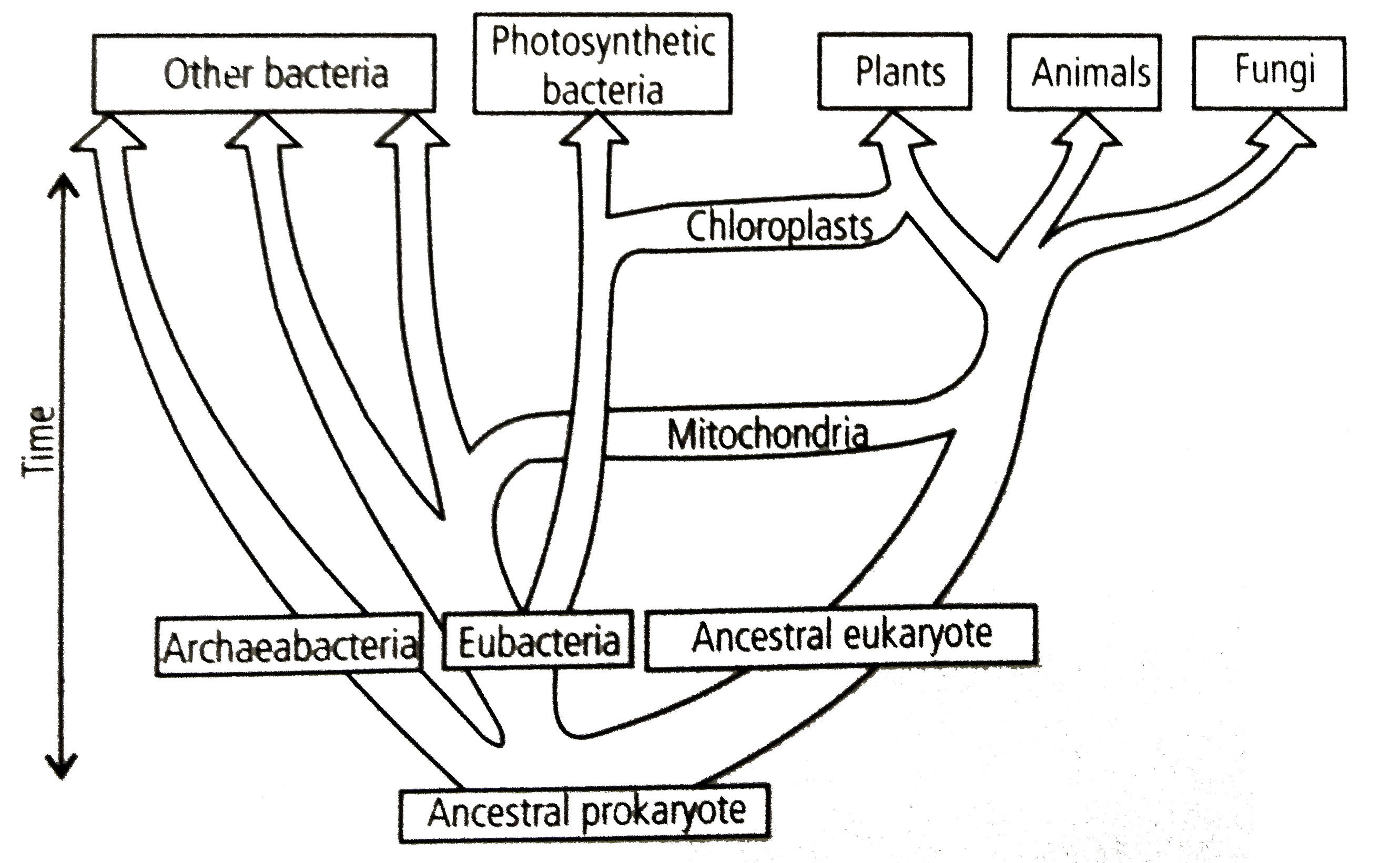Arrange the following groups of plants in an ascending evolutionary scale: Cycads: Rhynia-like plants: Chlorophyta ancestors: Dicotyledons, and Seed ferns. (in proper sequence)
To arrange the given groups of plants in an ascending evolutionary scale, we need to understand the evolutionary history of plants. Here’s the step-by-step solution:
1. Identify the Groups: The groups of plants we need to arrange are:
- Cycads
- Rhynia-like plants
- Chlorophyta ancestors
- Dicotyledons
- Seed ferns
2. Understand Plant Evolution:
- Chlorophyta ancestors: These are green algae, which are the earliest forms of plant life that originated in water.
- Rhynia-like plants: These are among the earliest vascular plants and represent a transition from non-vascular to vascular plants.
- Seed ferns: These are an extinct group of plants that show characteristics of both ferns and seed plants, indicating the evolution of seed habit.
- Cycads: These are gymnosperms, which are seed-producing plants that do not form flowers.
- Dicotyledons: These are a group of flowering plants (angiosperms) that produce seeds with two embryonic leaves or cotyledons.
3. Arrange in Ascending Order: Based on the evolutionary history:
- First, we have the Chlorophyta ancestors (green algae).
- Next, we place the Rhynia-like plants (early vascular plants).
- Then, we have the Seed ferns (early seed plants).
- Following that, we place the Cycads (gymnosperms).
- Finally, we have the Dicotyledons (angiosperms).
4. Final Sequence:
- Chlorophyta ancestors → Rhynia-like plants → Seed ferns → Cycads → Dicotyledons
- Cycads
- Rhynia-like plants
- Chlorophyta ancestors
- Dicotyledons
- Seed ferns
- Chlorophyta ancestors: These are green algae, which are the earliest forms of plant life that originated in water.
- Rhynia-like plants: These are among the earliest vascular plants and represent a transition from non-vascular to vascular plants.
- Seed ferns: These are an extinct group of plants that show characteristics of both ferns and seed plants, indicating the evolution of seed habit.
- Cycads: These are gymnosperms, which are seed-producing plants that do not form flowers.
- Dicotyledons: These are a group of flowering plants (angiosperms) that produce seeds with two embryonic leaves or cotyledons.
- First, we have the Chlorophyta ancestors (green algae).
- Next, we place the Rhynia-like plants (early vascular plants).
- Then, we have the Seed ferns (early seed plants).
- Following that, we place the Cycads (gymnosperms).
- Finally, we have the Dicotyledons (angiosperms).
- Chlorophyta ancestors → Rhynia-like plants → Seed ferns → Cycads → Dicotyledons
Topper's Solved these Questions
- GENETICS AND EVOLUTION Book:TRUEMEN BIOLOGY ENGLISHChapter:GENETICS AND EVOLUTION Exercise:SECTION-C
Explore 45 Videos
- GENETICS AND EVOLUTION Book:TRUEMEN BIOLOGY ENGLISHChapter:GENETICS AND EVOLUTION Exercise:SECTION-D
Explore 25 Videos
- GENETICS AND EVOLUTION Book:TRUEMEN BIOLOGY ENGLISHChapter:GENETICS AND EVOLUTION Exercise:SECTION-D
Explore 25 Videos
- GeneticsBook:TRUEMEN BIOLOGY ENGLISHChapter:GeneticsExercise:ASSERTION AND REASON
Explore 122 Videos
- HUMAN HEALTH AND DISEASEBook:TRUEMEN BIOLOGY ENGLISHChapter:HUMAN HEALTH AND DISEASEExercise:MULTIPLE CHOICE QUESTIONS
Explore 209 Videos
Similar Questions
Knowledge Check
In which one of the following groups would you place a plant which produces seeds but lacks fruits ?
ABryophytesBPteridophytesCGymnospermsDDicotyledonous plantsIn which of the following groups would you place a plant which produces spores and embryos but lacks seeds and vascular tissue?
APteridophytaBRhodophytaCBryophytaDPhaeophytaGiven diagram illustrates an evolutionary tree.

Which of the following statements can be deduced from the given evolutionary tree?
(i) The ancestral eukaryotes were anaerobic.
(ii) All eukaryotes were anaerobic.
(ii) All eukaryotes possess mitochondria.
(iii) Eubacteria and Eukaryota have a common ancestor whereas Archebacteria have a unique and independent origin.
(iv) Mitochondria and chloroplasts have similar genomes.
(v) Mitochondria are presents in plants, animals and fungi.
(vi) chloroplasts and mitochondria arose asendosymbionts.
(vii) Fungi and animals lost chloroplasts during evolution.Aiii,v and viBi,v and viCii,iii,iv and vDi,v,vi and vii
Arrange the following in the order of their location from periphery to centre in the entire dicotyledonous plant body
(a) Fusiform cells
(b) Trichoblasts
(c) collocytes
(d) Tyloses
The correct sequence is
View SolutionArrange the following in the sequence you would find them in a plant starting from the periphery-phellem, phellogen, phelloderm.
View SolutionFind the CORRECT chronological order of appearance of angiosperms
(i) Chloropyte ancestors
(ii) Tracheophyte ancestors
(iii) Psilophyton
(iv) Rhynia type plants
(v) Seed ferns
(vi) Progymnosperms
View SolutionWhich of the following is the correct sequence of ancestor of the evolution of plant forms.
a-chlorophyte, b-psilophyton, c-Rhynia type, d- Tracheophyte
View SolutionArrange the following terms in the correct developmental sequence in flowering plants... a. Sperms , b. Heart-shaped embryo , C. Syngamy, d. Microspore mother cell , e. Sporic meiosis , f. Globular embryo
View Solution

